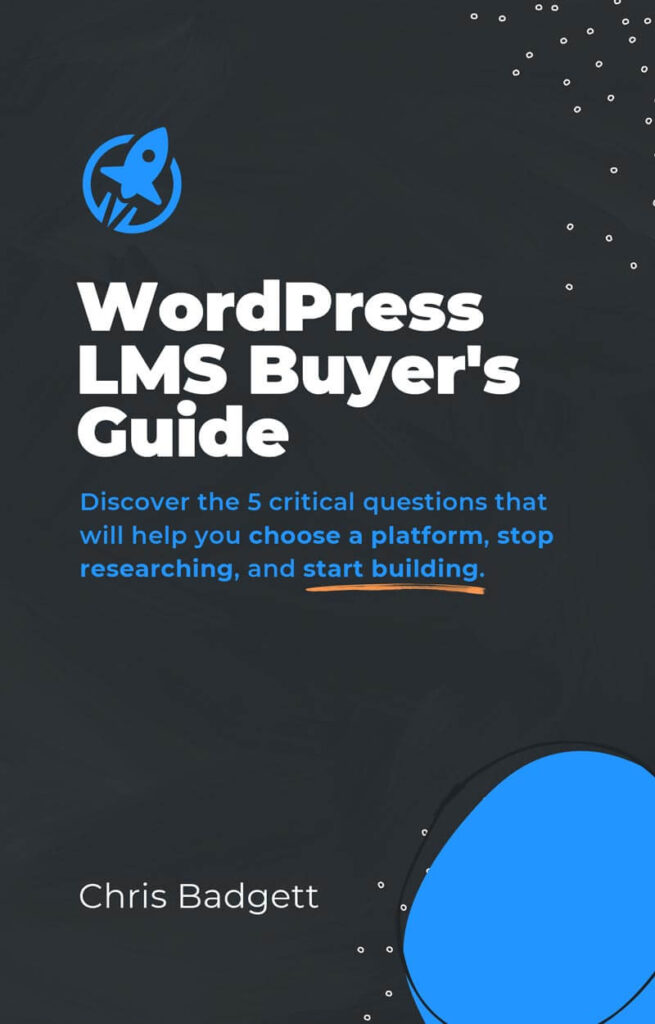Our friend Janelle Allen is the founder of Zen Courses, and she’s an incredible thinker in the online space. We asked her to write a guest post for us about ways to make your online courses more actionable, so check out that wisdom from Janelle in this post!
Three Ways to Make Your Online Course More Actionable
Online courses are all about action. In fact, it’s one of the key things that sets them apart from passive learning tools like ebooks or lecture-based webinars. And yet, when it comes down to it, we often struggle with building action into our courses.
Have you ever experienced this? Have you ever outlined the topics you wanted to cover in your course–even organized them into modules–only to realize you have absolutely no idea where to start when it comes to activities?
If so, don’t worry, it’s a pretty common thing. Just take a look at many online courses out there and, like a lot of in-person classes, they tend to focus on one thing: lecturing. There’s slides. There’s videos. There’s screencasts. But they all amount to one thing (wait for it): lecturing.
On their own, lectures can be, well, dry. The magic happens when you combine your lectures or presentations with activities (and ensure that both support learning outcomes). Because activities help your students succeed and help you become a better teacher.
So the million dollar question is: how do you make your online course more actionable?
How Do Activities Help You and Your Students?
Before we talk about strategies for making your course more actionable, let’s clarify how activities help your students succeed and how they help you become a better teacher. It all comes down to delivering results:
Activities Help Your Students Succeed by:
- Keeping them engaged with the material
- Helping them apply the concepts
- Identifying areas where they may need more instruction
Activities Help You Become a Better Teacher by:
- Supporting your course’s learning outcomes, which means you deliver results
- Breaking up big learning goals into smaller chunks so your students don’t get overwhelmed
- Providing insight into what your students struggle with, so you can offer guidance
Online courses have a reputation for low completion rates. These are just some of the ways activities help you increase your course’s rates.
Three Types of Activities to Use in Your Online Courses
#1: Quizzes
In online course nerdland (you know, where I live) we call quizzes formative assessments. It’s a fancy way of saying quizzes help you see (assess) how well your students understand the information during the course, instead of waiting until the end.
Quizzes aren’t a way to have your students apply complex concepts. Instead, what they are is an excellent way to help your students check their knowledge or comprehension of a topic.
In other words, quizzes indicate where you may need to provide additional instruction or support.
Let’s recap. Quizzes:
- Work well in courses that present a lot of information or complex concepts
- Help your students check their knowledge in a certain area
- Helps you identify challenging topics that would benefit from more activities
#2: Task-Based Activities
What if you want to teach an online course on coding, carpentry, or knitting, for example? These are hard skills (also called practical or technical skills). With any skill, the only way to learn it is to do it. Skills require practice and repetition.
Would it be easy to create a note in your course that says “go do X” and assume that your students will know what they’re doing? Sure. But what if you want to make sure your students actually do X? What if you want to see how well they did X and give them feedback? You create a task-based activity.
There are many types of task-based activities, from writing to media assignments. For instance, you can have your knitting students upload photos of their progress. Or you can have your carpentry students upload a video of them making each part of their table). For coding, you can have them write and share their code.
The goal is to have them complete a task that requires application, share it and get feedback. The feedback can come from you or their peers.
Let’s recap. Task-based Activities:
- Are ideal for hard skills
- Help your students apply concepts and transfer knowledge
- Are great for encouraging feedback and dialogue
Writing Exercises
Writing Exercises are task-based activities that deserve a category of their own. They work well when you want your students to deconstruct, synthesize or form their own thoughts about specific concepts. Of course, writing exercises also work well for creative courses like fiction writing.
For example, one of my clients is a therapist. We worked together to create her first psychotherapy online course. But how do you make therapy active without breaking boundaries? We used journaling exercises in each module to help her students process the concepts and develop their own conclusions.
The key to great writing exercises is to give clear prompts on what your students should write. You also want to provide step-by-step instructions for them to follow.
Let’s recap. Writing Exercises:
- Are ideal when you need students to process information and draw their own conclusions or be creative in a written way.
- Work best when you give students clear instructions and prompts
- Can take many forms, i.e. worksheets, journaling, short stories, etc.
Bonus: Course Projects
Course Projects work great in courses that focus on transformation or learning a complex skill (or set of skills). The idea is to have your students complete a course-long project that shows they can apply the concepts or skills they’ve learned.
The best way to approach projects is to break them into smaller assignments that are due throughout your course. That way it’s not one big chunk of work due at the end. Trust me, no one likes a bunch of work at the end of a course.
For example, if you had a course on mastering the sales process, the course project could be a sales proposal due at the end of the course. You could break up the different parts of the proposal and make them due throughout the course.
Or, maybe you have a course on knitting. The course project could be knitting a sweater. You could have progress check-ins throughout the course where your students would have to have a certain amount knitted and get feedback.
Recap – Course Projects:
- Works great for showing transformation or application of skills
- Break projects into smaller assignments that are due in different modules of your course
- There are a million ways to go about projects, so have fun with it!
Summary (and a gift for you)
So if you’ve ever struggled with knowing which activities to use to teach a topic, now you have some ideas for your next course. Using activities will not only improve the learning experience for your students, it will also help you be a better teacher. On top of that, better results for your learners leads to more testimonials and sales for you.
Get your free cheat sheet
Want even more action strategies? Click here to grab your free cheat sheet with five advanced action strategies and the tools you need to implement them.





